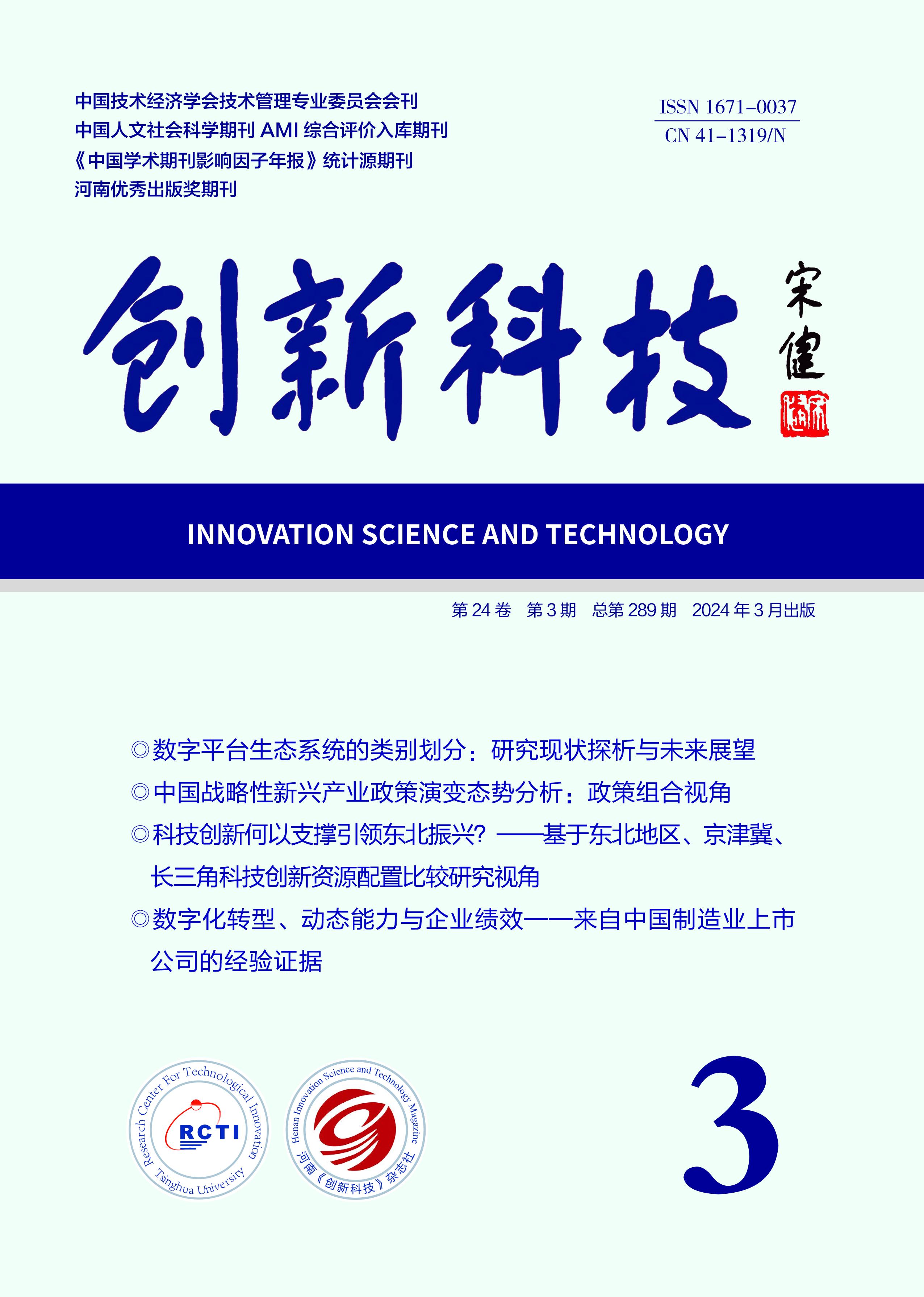INNOVATION SCIENCE AND TECHNOLOGY
Quick Search

All publication are peer-review
Peer review will take the from of double-blind review Judge objectively and impartially
There is no conflict of interest for the reviewer
Review articles shall be kept strictly confidential prior to publication
Theories and Methods of Science of Science
Academic Landscape, Hotspot Evolution, and Future Prospect of Development Research of High-tech Zones Driven by Innovation
Xie Jialong1 , Wei Yuetong2 , Zhang Lu3 , Yang Gege1
(1.School of Management, South-Central Minzu University, Wuhan 430074, China; 2.School of Management, Wuhan University of Technology, Wuhan 430070, China; 3.School of Entrepreneurship, Wuhan University of Technology, Wuhan 430070, China)
Abstract: Innovative drive is the core driving force for national high-tech zones (NHTZs) to achieve high-quality development goals and form new quality productivity, so the value implica⁃ tion, implementation approach, and practical effect of promoting the innovative development of NHTZs have become a hot topic of academic attention. To clarify the distribution characteristics, evolution, and future trends of research achievements related to the innovative development of NHTZs, and contribute to the basic theoretical research in this field and the innovative practice of NHTZs, this paper screens and sorts out the journal articles related to this topic in the CNKI and WoS databases. A total of 1 017 domestic and 727 international research papers were identi⁃ fied as research samples. The CiteSpace bibliometric software was used to conduct a visual analysis of the academic landscape, evolutionary trends, and hot topics in this field at home and abroad. The research findings are as follows: ①The research enthusiasm has continued to rise. However, due to the differences in classification standards and publication scales between do⁃ mestic and foreign journals, the domestic journals that publish research results have formed a stable core journal group with distinct publication characteristics, while the journals that publish foreign literature are relatively scattered. ② The core authors and research teams in the field have gradually become more stable. The institutions with high publication rates are mostly the economics, management, or business departments of universities with a background in science and engineering. Additionally, there is a noticeable geographical concentration. While more in⁃ fluential and highly contributing core authors have emerged in China, foreign cooperative institu⁃ tions exhibit a broader coverage and stronger connections. ③The research frontier hotspots keep evolving over time. The emergence of key terms is closely related to the development priorities and policy orientations of each period, showing a stage distribution characteristic basically con⁃ sistent with the number of published literature. ④The effectiveness of innovation system con⁃ struction and the development model of industrial clusters are the focus of widespread attention. However, due to the different creation paths and development cycles of NHTZs at home and abroad, domestic research focuses on macro innovation paths and regional radiation effects, while foreign research pays more attention to micro enterprise innovation and knowledge flow mechanisms. Evidently, this research field has formed a four-layer progressive theoretical frame⁃ work of "technology—enterprise—industry—region", focusing on two models: market-led and government-led. It mainly adopts two methodologies: vertical case analysis (benchmarking against international benchmark parks and domestic emerging parks) and horizontal empirical comparison (cross-sectional/panel data analysis based on spatio-temporal dimensions). The fo⁃ cus is on the two core issues: the allocation of innovation elements and the design of innovation pathways. Under the "process-result" dual evaluation system, it not only examines process ele⁃ ments such as the innovation-driven mechanism and the construction of the innovation network, but also assesses performance metrics such as innovation output efficiency and enterprise com⁃ petitive advantages, forming a systematic research paradigm. Finally, it holds that the future re⁃ search will present three characteristics: a shift from incremental layout to collaborative develop⁃ ment, a transition from path dependence to path creation, and a move from comprehensive evalu⁃ ation to multi-dimensional monitoring.
Key words: national high-tech zone; innovative development; academic landscape; hotspot evolution; research prospect